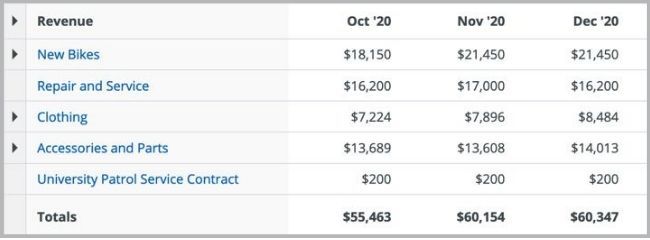Creating a Sales Forecast
Sales forecasting is a vital tool for businesses in predicting their future performance. It allows them to make informed decisions and allocate resources effectively. In this article, we will discuss the steps involved in creating a sales forecast and provide helpful tips to enhance accuracy and reliability.
The first step in creating a sales forecast is to gather historical sales data. This data should include information on sales from previous periods, such as months or years. By analyzing this historical data, businesses can identify trends and patterns that can be used to project future sales.
Next, businesses should consider external factors that may impact their sales. These factors can include changes in the market, customer preferences, or economic conditions. By understanding these external influences, businesses can make adjustments to their forecasts to account for potential fluctuations.
Once the historical data and external factors have been taken into account, businesses can start the process of creating a sales forecast. This involves analyzing the data and making projections for future sales based on the trends identified. It is important to use reliable and accurate data for this process to ensure the forecast’s validity.
In addition to analyzing data, businesses should also consult with relevant stakeholders, such as sales teams or industry experts. These individuals can provide valuable insights and perspectives that may influence the accuracy of the forecast. Collaboration and communication are key in creating a realistic sales forecast.
After the forecast has been created, businesses should regularly monitor and update it. Sales forecasting is an ongoing process that requires adjustments as new data and information become available. By consistently reviewing and updating the forecast, businesses can ensure the accuracy and relevance of their projections.
In conclusion, creating an effective sales forecast is crucial for businesses to make informed decisions and plan for future success. By gathering historical data, considering external factors, analyzing trends, and collaborating with stakeholders, businesses can create accurate and reliable forecasts. Regular monitoring and updating are also essential to maintain the forecast’s validity.

Business owners often fear forecasting sales. However, there is no need to be afraid because you can successfully forecast your own business’s sales. You don’t have to be an MBA or CPA. It’s not about finding some unknown magic answer or having specialized training. Estimating units and price per unit for future sales doesn’t require spreadsheet modeling or econometric modeling. All you need is a good understanding of your own business.
Contrary to popular belief, forecasting sales is not about predicting the future. It is much easier and more useful than you may think. As a former vice president of a market research firm, I can attest that an educated guess from someone who knows the business well is often more reliable than sophisticated techniques based on past data. Instead of trying to guess the future correctly, focus on setting assumptions, expectations, drivers, tracking, and management. Doing your job well, rather than possessing supernatural powers, is what matters.
The key to successful forecasting lies in regular reviews. It is important to review and revise your forecast regularly as spending should be tied to sales. A sales forecast helps with budgeting and management. Ultimately, the value of a sales forecast is measured by its impact on the business. Don’t shy away from forecasting just because you have a new product or business without past data. By identifying sales drivers and interdependencies, you can connect the dots and easily make course corrections as you review plan-versus-actual results every month.
Running a business without a forecast is much harder than it may seem. Your sales forecast is the backbone of your business plan. Sales are the primary measure of a business’s growth, and your sales forecast sets the standard for expenses, profits, and growth. Even if you don’t track any other numbers, the sales forecast will be the first set of numbers you’ll compare for plan-versus-actual use.
At the very least, forecast your sales, track plan-versus-actual results, and make corrections. This process alone constitutes business planning. If you need guidance on building a sales forecast for a subscription-based business, we have a dedicated guide for that.
Step 1: Set up your sales lines. Most forecasts include several distinct lines of sales. Ideally, your sales lines should match your accounting, although not necessarily in the same level of detail. For example, a restaurant should forecast breakfasts, lunches, dinners, and drinks instead of sales for each item on the menu. Similarly, a bookstore should forecast sales by lines such as hardcover, softcover, magazines, and categories (fiction, non-fiction, travel) if applicable.
Try to align your sales streams with your accounting so that you can easily compare the forecasted and actual sales later. This is valuable for real business planning and facilitates the regular review and revision process. The main objective is better management. For instance, in a bicycle retail store business plan, the owner works with five sales lines, as shown in the illustration here.

The revenue for this retail store includes new bikes, repair, clothing, accessories, and a service contract. The bookkeeping tracks sales in these five categories.
Hello!
I’m Andrew Brooks, a seasoned finance consultant from the USA and the mind behind phonenumber247.com.
My career is built on a foundation of helping individuals and businesses thrive financially in an ever-changing economic landscape. At phonenumber247.com, my aim is to demystify the complex world of finance, providing clear, actionable advice that can help you navigate your financial journey with confidence. Whether it’s personal finance management, investment strategies, or understanding the nuances of market dynamics, I’m here to share insights and tools that can propel you towards your financial goals.
Welcome to my digital space, where every piece of advice is a step closer to financial clarity and success!
